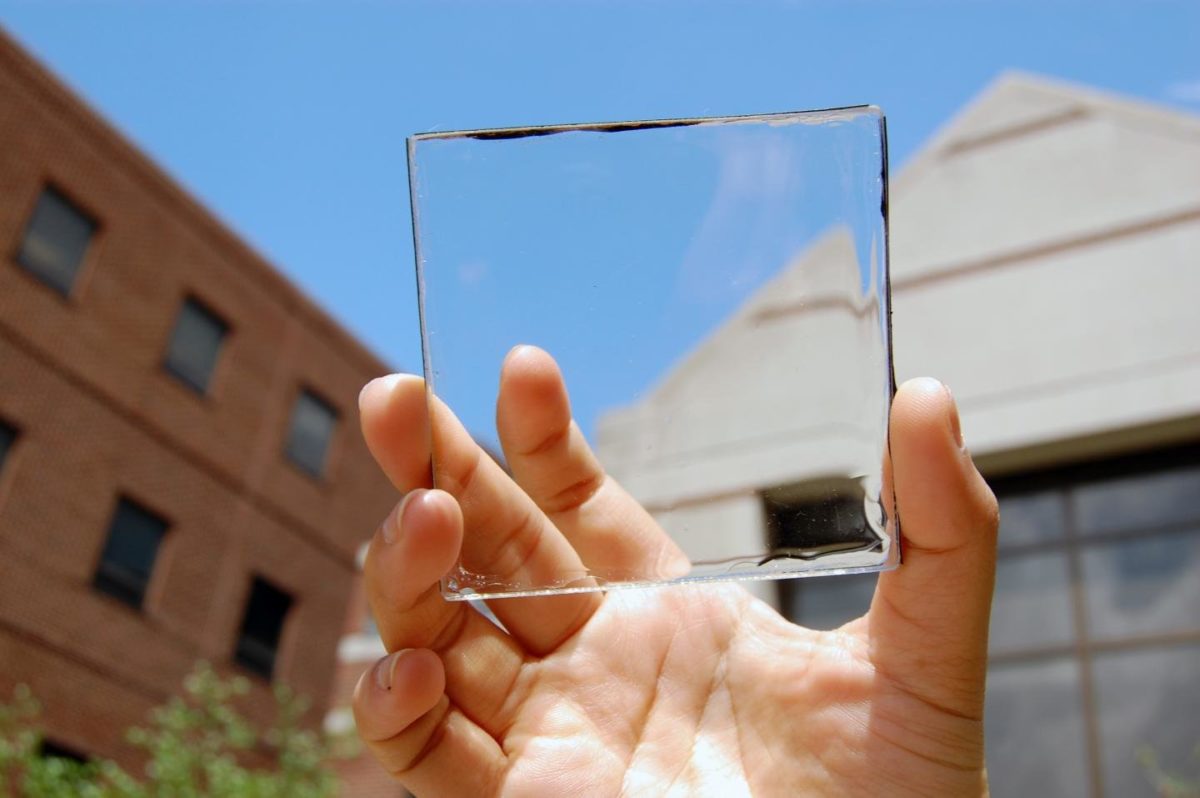The engineering team that led the project have argued that the widespread use of such highly transparent solar applications, alongside rooftop units, could generate enough energy to meet total U.S. electricity demand, and drastically reduce the use of fossil fuels.
“Highly transparent solar cells represent the wave of the future for new solar applications,” said Richard Lunt, the Johansen Crosby Endowed Associate Professor of Chemical Engineering and Materials Science at MSU. “We analyzed their potential and show that by harvesting only invisible light, these devices can provide a similar electricity-generation potential as rooftop solar, while providing additional functionality to enhance the efficiency of buildings, automobiles and mobile electronics.”
The technology utilizes organic molecules to absorb invisible wavelengths of sunlight. The researchers can adjust these materials to up ultraviolet and near infrared wavelengths which are processed into electricity.
The scientists have estimated that up to 7 billion square meters of glass surface in the U.S. could be covered by the material, with the potential of supplying 40% of energy demand in the U.S.
Popular content
“The complimentary deployment of both technologies, could get us close to 100 percent of our demand if we also improve energy storage,” Said Lunt.
Nevertheless, Lunt reported to Nature Energy that while see-through solar technologies will never be more efficient at converting solar energy to electricity than their opaque counterparts, they can get close and offer the potential to be applied to a lot more additional surface area. Right now, transparent solar technologies are only at about a third of their realistic overall potential.
“That is what we are working towards,” he said. “Traditional solar applications have been actively researched for over five decades, yet we have only been working on these highly transparent solar cells for about five years. Ultimately, this technology offers a promising route to inexpensive, widespread solar adoption on small and large surfaces that were previously inaccessible.”
This content is protected by copyright and may not be reused. If you want to cooperate with us and would like to reuse some of our content, please contact: editors@pv-magazine.com.


You are doing a great job. Congratulations.
Good news for Solar energy users.
It will be a greatest innovation in energy generation, all the very best to the team..
This is nice but will it ever actually be used? We also need to get on board with the Paris Climate agreement. U.S. is the only country not in it. Pathetic.
While I agree on you statement on the Paris Climate Agreement and the US there is more then the US in the world, fortunately! I live in the Netherlands (EU) and we tend to have very big windows in our houses. The Netherlands tries to outpace the outcome of the Paris Climate Agreement.
So, I myself am very interested in this development, and I would really like to deploy this in my house. So, please make this viable as soon as possible!
This would be great for mobile devices to always have a source of power and less charging. Lets make this happen!!!!!!
Wouldn’t it be the next best thing for electric automobiles to run for ever with these panels as windows.
Absolutely amazing, solar glass. Just imagine ALL the glass surfaces on houses, buildings fitted with this technology.